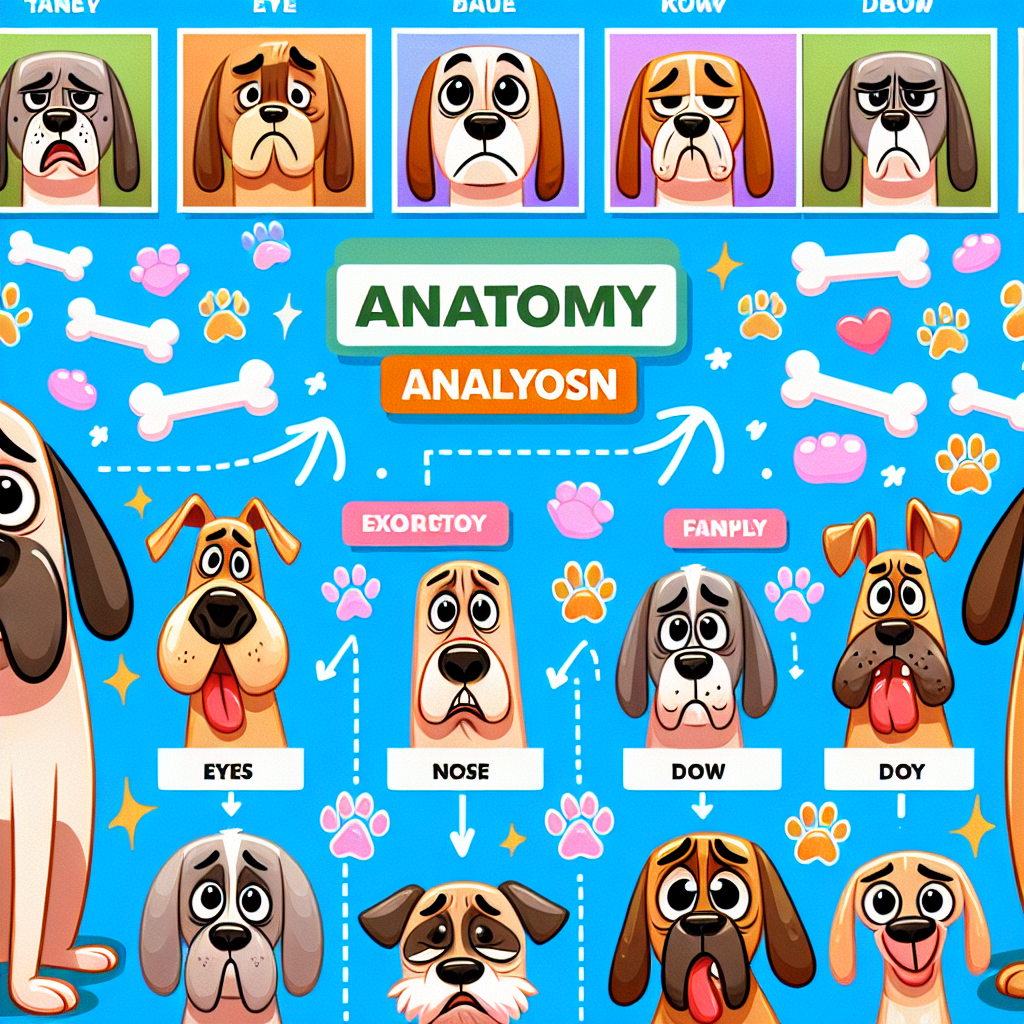Whether you’re a fan of classic cartoons or modern animated films, you’ve probably noticed that droopy faced dogs are a popular choice for animated characters. From classic characters like Droopy from MGM cartoons to modern favorites like Doug from Disney’s “Up,” these lovable and endearing canines have captured the hearts of audiences around the world. But what is it about these droopy faced dogs that make them so irresistible? In this article, we’ll delve into the appeal of droopy faced dogs in cartoons and explore why they continue to be such beloved characters.
The Endearing Nature of Droopy Faced Dogs
There’s something undeniably charming about the droopy, sad-looking faces of certain dog breeds. Breeds like the Bloodhound, Basset Hound, and Bulldog are known for their distinctive droopy facial features, which give them a perpetually sad or forlorn expression. This unique look has a universal appeal that captivates people of all ages.
These dogs are often portrayed as underdogs, which makes them relatable to audiences. Their downtrodden appearance tugs at our heartstrings, evoking feelings of empathy and compassion. Additionally, their expressive eyes and floppy ears add to their adorableness and make them even more endearing.
The Role of Droopy Faced Dogs in Cartoons
Droopy faced dogs have played a significant role in the world of animation, serving as lovable characters in a wide range of cartoons and animated films. They are typically depicted as loyal, gentle, and ultimately endearing, making them perfect companions for the protagonists of these stories.
One of the most famous droopy faced dogs in cartoons is Droopy, the laid-back and lethargic Basset Hound created by Tex Avery. With his sagging skin, droopy eyes, and lethargic demeanor, Droopy quickly became a beloved character known for his unflappable nature and deadpan delivery. Other notable droopy faced dogs include the lovable and loyal Dug from Pixar’s “Up” and the melancholic but sweet-eyed hound, Droopy from “Tom and Jerry.”
These characters often serve as comedic foils, showcasing their unique personalities and endearing traits in humorous and heartwarming ways. Their expressions and body language are incredibly relatable, which allows audiences to connect with them on a deeper level.
The Universal Appeal of Droopy Faced Dogs
It’s not just their appearance that makes droopy faced dogs so appealing in cartoons; it’s also their personalities and the universality of their stories. These characters often embody traits that resonate with audiences, such as loyalty, perseverance, and unwavering devotion. Regardless of the challenges they face, they remain steadfast and true, which makes them incredibly inspiring and relatable.
In addition, droopy faced dogs also serve as symbols of resilience and hope. Their ability to maintain a positive outlook despite their downtrodden appearance is both heartwarming and uplifting, reminding audiences that appearances can be deceiving. They show us that it’s what’s inside that truly matters, and that a droopy face can conceal a heart of gold.
FAQs About Droopy Faced Dogs in Cartoons
What are some other famous droopy faced dogs in cartoons?
In addition to Droopy, Dug, and the various droopy faced hounds from “Tom and Jerry,” other notable droopy faced dogs in cartoons include Sad Sack from “Wacky Races,” Porkchop from “Doug,” and Roobarb from “Roobarb and Custard.” These characters have each left a lasting impression on audiences with their lovable personalities and iconic droopy faces.
Why do audiences connect with droopy faced dogs in cartoons?
Audiences connect with droopy faced dogs in cartoons because they embody relatable traits and characteristics, such as loyalty, perseverance, and unwavering devotion. These characters often serve as underdogs, which makes them instantly endearing to viewers. Additionally, their expressive eyes and downtrodden appearance evoke feelings of empathy and compassion, further deepening the audience’s connection with them.
What is it about droopy faced dogs that make them so lovable?
Droopy faced dogs have a unique charm that stems from their perpetually sad or forlorn appearance, which tugs at our heartstrings and evokes feelings of empathy and compassion. Their expressive eyes and floppy ears add to their adorableness, making them irresistible to fans of all ages. Additionally, their unwavering loyalty and endearing personalities make them incredibly lovable characters that audiences can’t help but root for.
Conclusion
The appeal of droopy faced dogs in cartoons is undeniable, and their enduring popularity is a testament to their universal charm. Whether they’re portrayed as laid-back and lethargic like Droopy or as lovably loyal like Dug, these characters continue to capture the hearts of audiences around the world with their expressive faces and endearing personalities. Their relatable traits, unwavering devotion, and resilient spirits make them not just beloved cartoon characters, but also timeless symbols of hope and resilience.
Next time you find yourself laughing or welling up with emotion at the sight of a droopy faced dog in a cartoon, remember that these characters are more than just adorable animated creations; they are universal symbols of love, loyalty, and the enduring human spirit.








+ There are no comments
Add yours